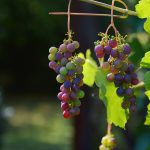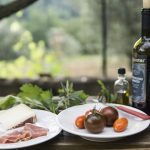Introduction
The journey of red wine from vineyard to bottle is a complex and fascinating process that involves careful cultivation, harvesting, fermentation, aging, and bottling. This article provides an in-depth look at the winemaking process, highlighting the key steps involved in producing high-quality red wine.
1. Vineyard Management
The winemaking process begins in the vineyard, where grape cultivation takes place:
- Soil and Climate: The choice of soil and climate is crucial for grape quality. Different grape varieties thrive in specific conditions, and winemakers must consider factors such as temperature, rainfall, and soil composition.
- Grape Varieties: Selecting the right grape variety is essential. Popular red grape varieties include Cabernet Sauvignon, Merlot, Pinot Noir, and Syrah. Each variety has unique characteristics that influence the flavor and aroma of the wine.
- Vine Care: Vineyard management involves pruning, irrigation, and pest control. Winemakers must monitor the vines closely to ensure optimal growth and grape quality.
2. Harvesting
Once the grapes reach optimal ripeness, it’s time for harvesting:
- Timing: Harvesting typically occurs in late summer or early fall, depending on the grape variety and climate. Timing is critical, as overripe or underripe grapes can negatively affect the wine’s flavor.
- Methods: Grapes can be harvested by hand or machine. Hand harvesting is often preferred for high-quality wines, as it allows for careful selection and minimizes damage to the grapes.
3. Crushing and Fermentation
After harvesting, the grapes are processed to begin fermentation:
- Crushing: The grapes are crushed to release their juice. In traditional winemaking, this is done by foot or with mechanical crushers. The skins, seeds, and stems are often included in the fermentation process, contributing to the wine’s color and tannins.
- Fermentation: Yeast is added to the grape juice to initiate fermentation, converting sugars into alcohol. This process can take several days to weeks, during which winemakers monitor temperature and fermentation activity.
4. Aging and Maturation
After fermentation, the wine is aged to develop its flavors:
- Barrel Aging: Many red wines are aged in oak barrels, which impart flavors such as vanilla, spice, and toast. The aging process can last from several months to several years, depending on the desired style.
- Clarification: During aging, sediment may form in the wine. Winemakers may choose to clarify the wine through fining or filtration to achieve a clear product.
5. Bottling and Packaging
Once the wine has matured, it’s time for bottling:
- Bottling Process: The wine is transferred to bottles, often with the addition of sulfur dioxide to preserve freshness. Bottles are sealed with corks or screw caps, depending on the winemaker’s preference.
- Labeling: Labels provide essential information about the wine, including the producer, region, grape variety, and vintage. This information helps consumers make informed choices when selecting a bottle.
Conclusion
The winemaking process is a meticulous journey that requires skill, knowledge, and passion. From vineyard management to bottling, each step contributes to the final product, resulting in the diverse and flavorful red wines we enjoy today. Understanding this process deepens our appreciation for the craftsmanship behind each bottle of red wine.


